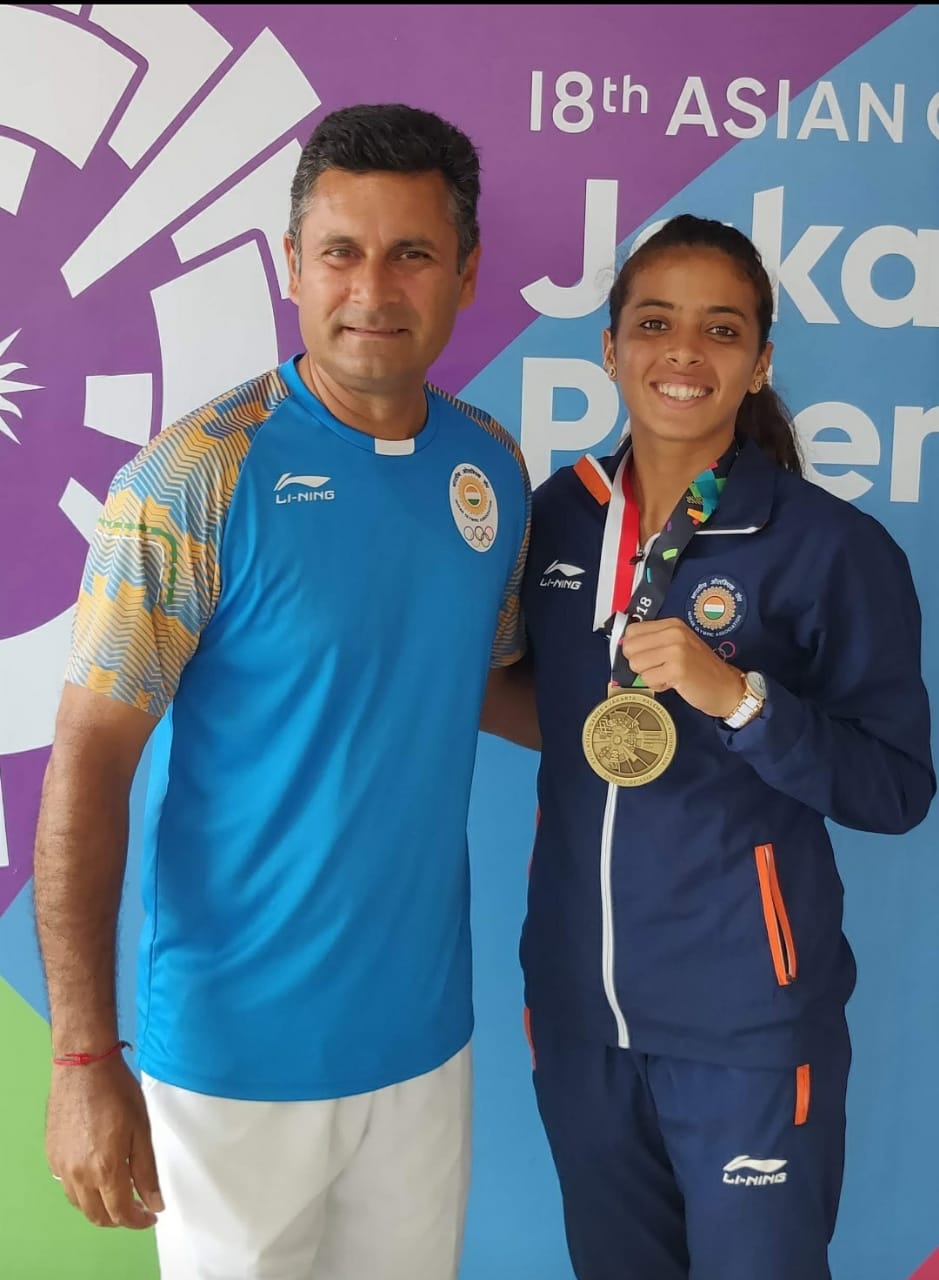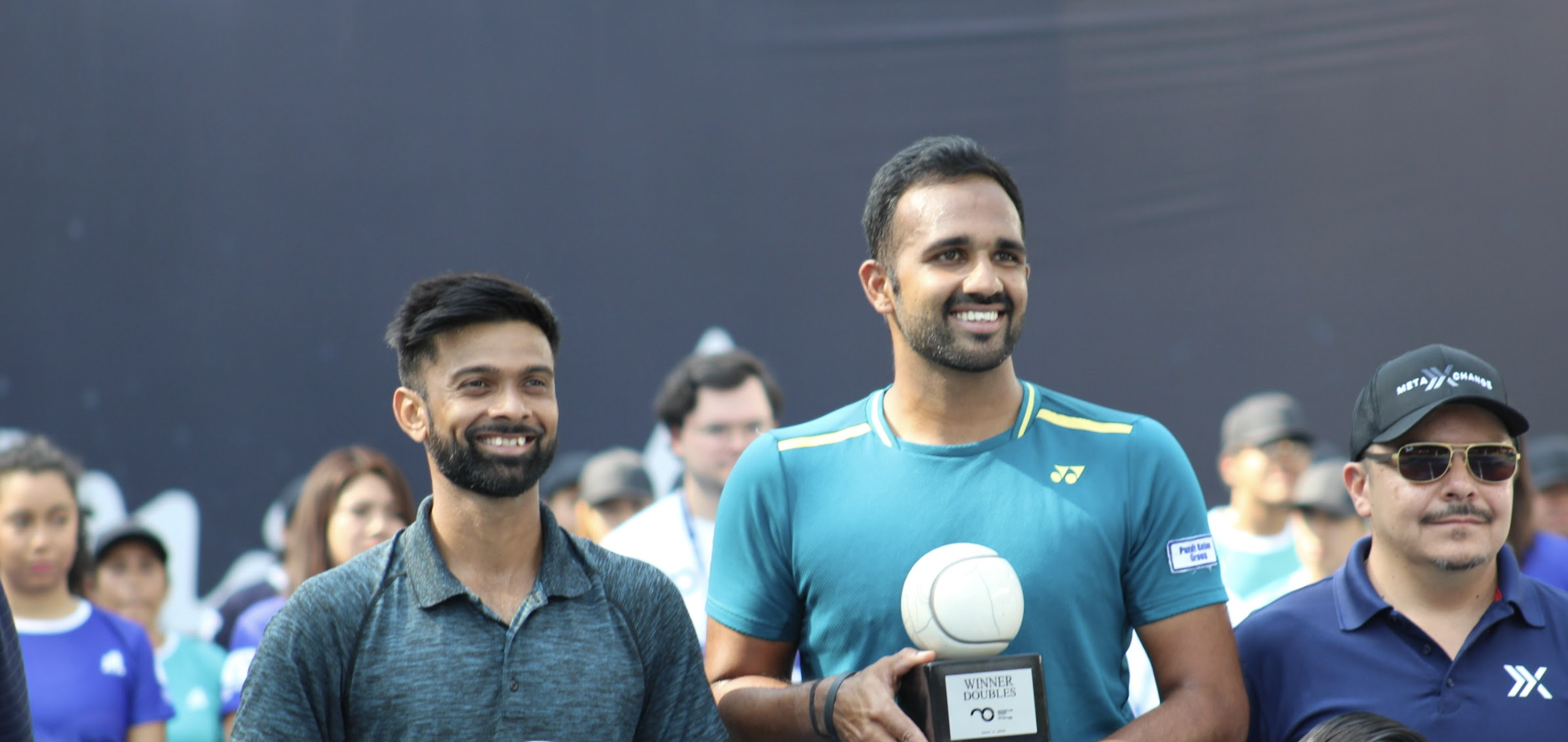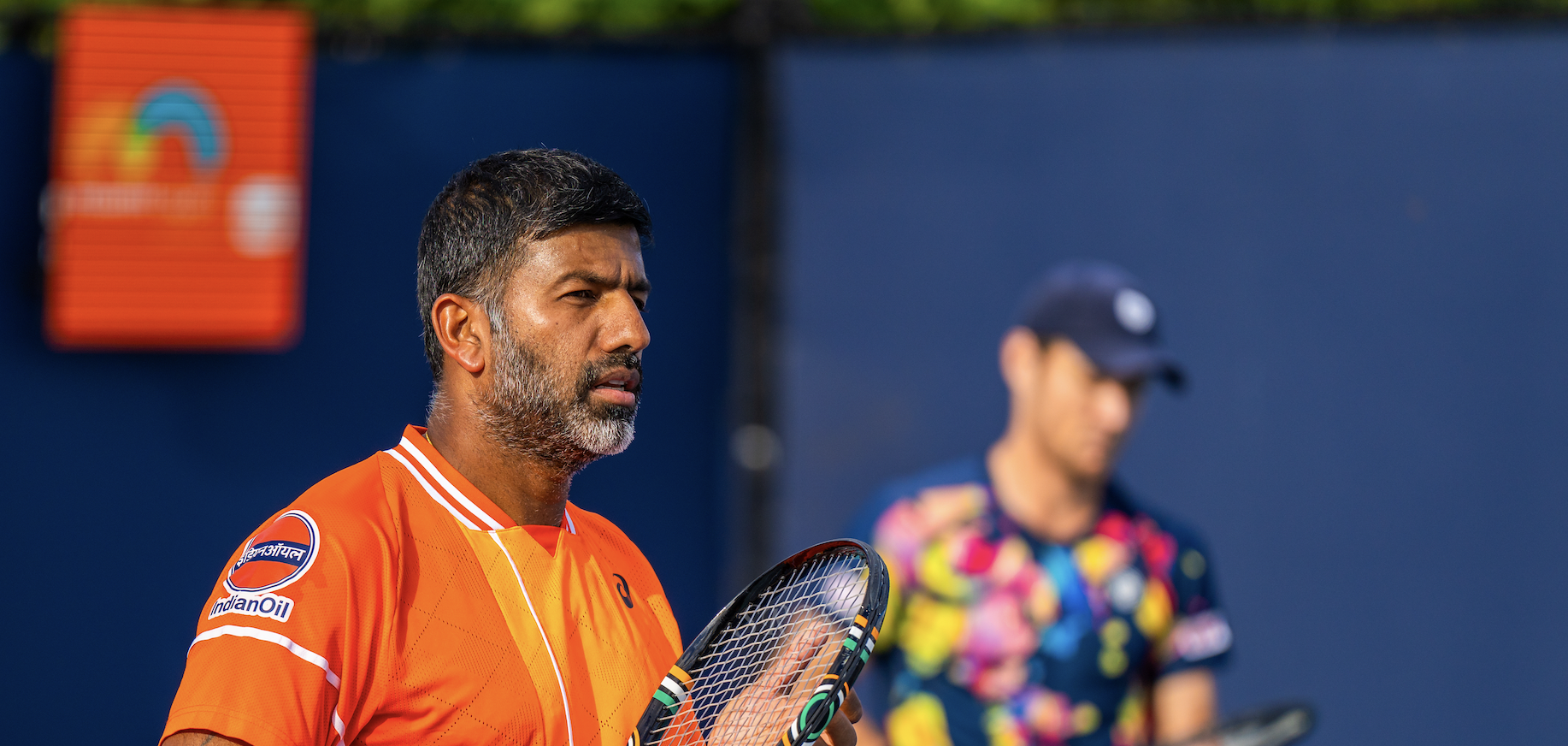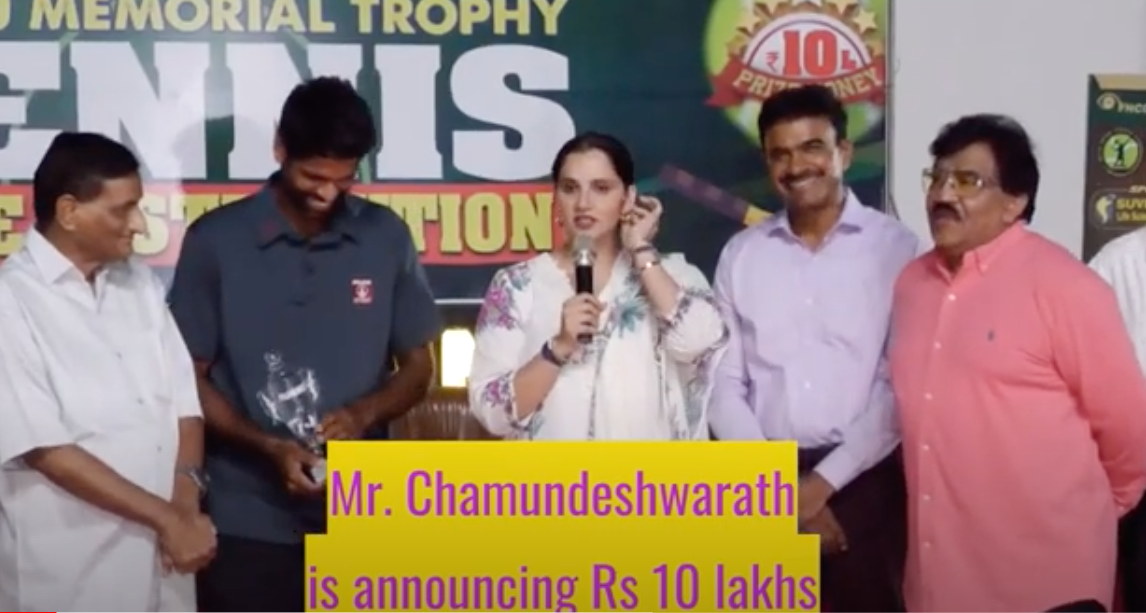Mr Zeeshan Ali is one of the top ranked ATP player to have come out of India. Mr Zeeshan was ranked World Junior No.2 at the age of 16 and 126 in the ATP. Hewas also the youngest Men’s National Champion at age 16. He was also part of the Indian Davis Cup team which reached the Davis Cup finals in 1987.
Mr Zeeshan Ali was the coach of the Indian Fed Cup team in 2015 with Ankita Raina being one of the team members. In this interview, Mr Zeeshan Ali takes us through his journey and also his thoughts on the Indian No.1 Ankita Raina.
This is an article as part of the series of articles on Ankita Raina and her incredible journey so far.
Tell us about how you got into tennis, your journey.
The tennis journey has been long and very exciting and I’ve been very privileged to have played the sport. It runs in the family because of my father, who was coach of the Indian Davis cup team for over 25 years. He had coached players like Vijay Amritraj, Ramesh Krishnan and has also produced over 10 Men’s National Champions. Apart from that, he was also the coach of the Belgian and the Malaysian Tennis teams. All his younger brothers were into tennis as well, so tennis runs in the family.
Still, Tennis was not my first choice. I always enjoyed playing cricket more than tennis, that was something that my father was quite worried about. At the age of 13, I was more into cricket than I should have been into tennis. That year 1983, he was the coaching Vijay Amritraj and was traveling with him. Just before Wimbledon, my father asked me to come along so that I could watch the big players play. I was there a couple of weeks before Wimbledon started. I watched Vijay practice with players like Bjorn Borg, McEnroe and Connors amongst others. I saw the lifestyle that these players had, the kind of crowd following, the kind of cars they drove, their lifestyle- for a 13 year old coming out of India at that time, I was awestruck and wanted nothing more than to become a top class tennis player.
The passion for the sport that they had was something that appealed to me and that was when it struck me that this was something that I want to do. When I came back to India, I kept my cricket bat aside and focused mainly on Tennis. With my father being my coach, it was easier for me to have access to proper coaching and a tennis court.

The initial impression of working with Ankita Raina. She has been India No.1 for some years now. What do you think makes her stand out?
My first experience with Ankita was when I went as the captain of the Fed Cup team in 2015
and I always felt that more than anything else, she was a very hardworking and dedicated player. And when you are that hardworking and motivated, at some point in time results are going to come. Mr.Hopman, who was one of the greatest tennis coaches and produced 8-10 world champions, I remember him telling me that opportunity knocks on everyone’s door, it’s about how well prepared you are to take that opportunity. If you are prepared for it, you can make something out of it. If you are not, you’re going to make 10 different excuses. In life, one doesn’t get too many opportunities or chances. You get a couple of them and if you are ready to take them, that makes all the difference and chances of success is much higher.
Coming back to Ankita, the first thing I noticed was that she was very motivated, very disciplined and very hard working. I told her not to be upset about results not coming cause they will as long as you continue to work in the correct way and sincerely. People might be working hard, but If you are working wrong even for 8 hours a day, it’s not gonna help you. Working smart is going to help you more than working hard. Both are important but you have to be smart in your hard work. I am happy to see that she has been doing very well of late. I obviously feel that she could have been doing much better in terms of ranking but I’m confident that will also improve.
She is 27 years old. She still has a few years left ahead of her. Her goal I’m sure is to break into the top 100 and then who knows from there how much higher she can go. But the first step now is to make it into the top 100. Definitely in the last year or so, she has shown that she has the potential to do it.

What do you think are her areas of strength? Some aspects that you think she can improve and work on.
She has very solid groundstrokes but the area where she really needs to focus on is her second serve. Serve is something I feel, if she improves, it is going to help her beat better and higher-ranked players. Her fitness,movement and strength are things I’ve noticed that she has been working on and can see the improvement over the last 3-4 years.
The second thing that I think she should work on is her net game. She has been doing well in doubles but I also think that she needs to add this element to her game. She needs to be more confident when she comes to the net while playing singles. With playing doubles she is good. How to use her net game more when she is playing singles is what I think she needs to work on.
You are the youngest Men’s National Champion, you won the title when you were 16. What were your feelings back then?
What many people don’t know is that at the age of 14, I won the Men’s Doubles Nationals with Mark Terriers as my partner.
After that, I won the Men’s Singles Nationals at the age of 16. The funny thing is the week before that, when I was 16, I was ranked No. 2 in the world in Juniors and I came to India to play the Junior National Championship. I thought it was going to be a piece of cake. I was too overconfident and ended up losing in the semi-finals of the junior national championship to a player called Ravi Krishna Kumar. That was a big wake-up call for me.
The following week was the Men’s national championship in Kolkata. I got my act together and went on to win the championship. So, Even though I never won the Junior Nationals, I ended up winning 5 National Grass Court and 2 National Hard Court Championships in Singles and another 4 in Doubles.
Tell us about your experience as a player and as a coach representing India.
When you start playing a sport seriously, It is every player’s dream and ambition to play for their country. It was mine as well. The moment I started playing seriously, the one goal I had in mind was to represent India, whether it was in Davis Cup, Asian Games or the Olympics. Luckily I got a chance to do all 3. In Davis Cup, I was part of the team which reached the finals in 1987, that was my first year on the team. And then we made the Semi-Finals in 1993. And I played my last match in 1994, It was against the USA, I played against Jim Courier and Todd Martin.
Late in 1994, at the age of 24, I hurt my back while training for the Australian Open. I was in the main draw for that event and that kind of stopped me from playing on professionally because it was a major injury. At that point in time, there was no protected ranking system. So every single week, I didn’t play, my rank was dropping and after 9 months my ranking which was 130 in the world dropped to somewhere around 1040.
After the injury it really became very difficult to make a comeback, I did try. I got my ranking back up to around 250 – 300in the world but the injury was such that the moment I played a very long and tough match, no matter how much of stretching or recovery I did, the back was never a 100% the following day. When I played a smaller tournament where the matches were not too tough I could get away with it but the bigger tournaments, the tougher matches were something that I was not able to do consistently. So that is when I decided that If I am not going to be able to play tennis to be a player who is going to be top 100 in the world and If I can’t achieve that, then I might as well not play the sport. My biggest regret is that I didn’t think of continuing to play doubles. After all I had had good results in doubles. I played doubles at Wimbledon for 4 years and even reached the 3rd round in two of those years, apart from having won numerous challenger events. I had also reached the Finals of the Junior US Open Doubles. The focus was so much on singles that it was devastating to think that I could not play at the top level. The thought of continuing in doubles never crossed my mind at that time.
But then after this, what next was the big question.
So that is when I decided – I love the sport so much, I have put in so much of effort, given so much of time and energy into a sport which I am so passionate about and decided that this is what I want to continue. So coaching was the obvious option. To help the younger players with the experience that I’ve had over the years. At the age of 24, I had already played 2 Asian Games. In 1994 I was part of the team which won the gold medal. In 1988, I qualified and represented India in the 1988 Summer Olympics. I had won 7 Singles National Men’s Championships, was Davis Cup player for 9 years, and had played main draw in singles and doubles of Grand Slams.
I was lucky to have achieved whatever I did by the age of 24. In today’s day, 24 is the age when a lot of players really starts to peak.
With coaching, my aim was and still is to be one of the best coaches there is. I totally agree when people say, “A good player doesn’t necessarily have to be a good coach” ( but over a period of time he can be) because when I first got into coaching, I thought it would be a piece of cake because I had already played so much tennis that teaching tennis should not be a problem. It’s a little easier when you are coaching a top-level player but when you want to coach small kids, intermediate players, and upcoming juniors, It’s a completely different ball game.
For me, the first 5 years of my life, I spent a lot of time coaching in different academies across Australia, Europe and the US learning how to coach and getting a USTA Professional coaching certification. I got my first full-time job as a coach in the UAE where I was invited by the royal family in Dubai to promote tennis among the UAE nationals. I was appointed the Coach of the UAE Davis Cup team as well. I spent 5 years doing that. Another 8-10 years having my own set up of tennis academies in Dubai and also coaching in the US. Over a period of time, I started to get a lot of calls from India from tennis players, my friends in the media, the tennis federation asking that it was time for me to return to India. The pull to return was getting stronger every year and I realized it was time for me to come back. I had 5 centers running in Dubai at that time and financially it was really lucrative but I wanted to come back to India and groom the younger generation of players and to give back to the country that has given me so much.
After all the years I’ve put in coaching, the players in my academy are ranked #1 in many junior categories in the nation and the hard work and effort has started to pay off. The cherry on top is being appointed the coach of the Indian Davis Cup Team, which is a great honor for me, and to be a part of the Davis Cup team again. Representing India has always been a dream as I had mentioned earlier. Being the Captain of the Fed Cup team in 2015 and being the Captain at the Asian Games and the Olympics in 2016. All these things are what I aspired to do. For me, this is a dream which is being fulfilled. It’s an ongoing journey, I have many more years left in me, to give back to the country. And it was definitely the right decision to move back to India. Being presented the Dhyan Chand Award from the President of India, Mr Pranab Mukherjee for my contribution to tennis in India is also something I will cherish.

View on the pipeline for women in our country? Which juniors or women are you upbeat about?
I think we have a lot of talent in our country, there is no doubt about that. There are a lot of good young girls coming up. The women’s team itself has gone out there and has shown us that they have the potential to play tennis at a higher level by qualifying for the playoffs at the Fed Cup. I think all the girls have been doing really well. All the hard work that they have been putting in is showing in the results.
As far as the talent and potential is concerned, I think we have a huge amount of talent in our country. It’s just the question of how to put it together. I think the one thing we really lack is not so much the infrastructure or the coaching, we have really good coaches in India. A lot of the fitness coaches are at the top of their game. I think the one thing we really lack is the number of tournaments in the country that the girls can play. The lack of sponsorship and the lack of money in Women’s tennis in India really needs to improve.
If our players are exposed to a lot of competition, I think that is the one thing that will really help them make the jump. They need to get more tournaments to play and more competition. I have always said that there is no substitute for competition, no substitute for matches. If our players are able to do that, there is no reason why we cannot have more players in the top 100 or top 50 in the world. There is no lack of talent or potential in our country.
What do you think about the infrastructure of tennis in India? Where do you think we lack the most and what should we as a nation improve upon?
The infrastructure is good now. There are so many tennis academies, communities, schools and coaches all over the country. So there is no dirt or infrastructure. When you look at all of us, who represented India, Leander, Mahesh and even the Amritraj brothers, what was the infrastructure at that point of time? We played at our club, we practiced and trained there and then we went out and played tournaments. Yes, playing tennis at that point in time was different from what it is now.
The number of players that play tennis professionally are far more than what it was at that point in time. As far as the infrastructure is concerned, the kind of equipment that is available now in India is as good as the rest of the world. Everything is available now. It is up to us on how we utilize the opportunity given to us.
The one thing that has always been lacking is solid financial support, whether it is from corporate sponsors, state government or the national government. The government and the AITA are trying to do their bit but a lot .ore still needs to be done. If the deserving players get that form of support they will make that jump in rankings.. There are two things that are the need of the hour. Either you have a lot of tournaments in our country where players don’t rneed to travel abroad as much or you have enough financial capabilities to go and play tournaments abroad for 8 months of the year.
One or the other needs to be there and if there are tournaments in India then great, the benefits are far wider and reach out to a larger audience in terms of tennis players. If not, then how does a player support themselves to be able to travel abroad for 7-8 months of the year because that is what required to make it to that level.
We have a lot of players in our country which are in the top 600 in the world. They haven’t been able to make the jump because of the financial aspect. It’s a totally different thing if you are the top 500 in the world compared to a top 100 in the world. The expenses are high for both but, the returns are completely different. The kind of money you make if a player is top 100 is totally different. The potential is definitely there in our country but there needs to be a lot more competition in the country for the top level of players.
If you look at a place like Spain which of course is a much smaller country , there are top players who can get together and practice, that makes a big difference. That is why we have so many of our top players go off to Germany, Spain or other European countries because they get the opportunity to play against so many top players.
Who are the upcoming junior players we should watch out for from your academy?
Currently our No. 1 player is a girl called Reshma Maruri. Reshma is 16 years old. At the end of 2019, she was ranked #1 in India in the U-16 as well as the U-18’s. She is still #1 in U-18. Her younger sister Suhita Maruri is I think ranked #5 in U-16. Last year she was #2 in U-14. So we have these 2 girls training with us right now who have a tremendous amount of talent.
We have Nikhil Niranjan who is now around 370 in ITF juniors. We had also given a girl called Zafreen Shaikh (Hearing and speech impaired) player a full scholarship – she is from Andhra Pradesh and is the National Champion in her category. My main focus is to work with the Junior players because that is where I think, they really need our support and guidance right now.
What are a few areas you focus on in the academy? What is it that sets it apart?
The main thing is that I am there on the court, working with these players. There are a lot of rumors going around that “Zeeshan Ali being the coach of the Davis Cup team travels with the National team for about 6-7 months of the year and is never there at the academy”. This is something that I want to clarify. It is not true because the Davis Cup for India is held twice in a year and it’s only then that I’m traveling with the team. It’s 3 times a year if there is something like the Olympics or Asian Games that year. Apart from that, I’m there at my academy 6 days of the week. The main thing for me is to be accessable and be there for my players. That is the reason why I haven’t opened up different centers in different parts of the country because it gets very difficult for me to travel across the country and I won’t be doing justice to the players. So If a player wants to learn tennis from me, she/he can come to Bangalore and join my academy. And I can guarantee you that I will be there personally taking care of the player who has come over here.
The focus is mainly on my involvement and the fitness part. I think in today’s day and age, 70% of the game is about fitness. It’s all about strengthening, flexibility, movement and endurance. We have an excellent fitness program that we run at the academy apart from the tennis part of it. All the coaches at my academy are ITF and USTA certified coaches – who have many years of coaching experience. We have dedicated coaches for all levels of players such as beginner, intermediate, advanced, elite and so on. It is very difficult for a coach to be good at coaching all different levels of players.
So for me, it’s very important to identify these coaches and see where their strengths lie and then based on their strengths, I put them in age groups that they are best suited for.







Leave a Reply